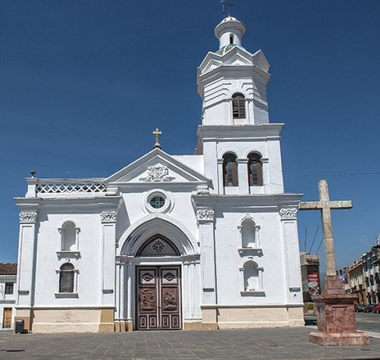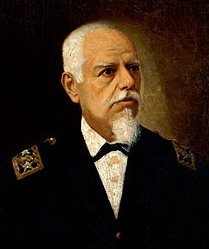Justice was swift and merciless in Colonial Cuenca; A hangman’s post and a humiliation cross stand testament to the city’s bloody past
By David Morrill
On September 10, 1783, Cuenca resident Melchor del Valle was convicted by the Spanish Royal Court of murdering his brother Sylvester. The sentence: “Two hundred lashes in the public square, then hanging on the gallows until death.”

The hangman’s tower in Cuenca’s El Vecino barrio.
The court further ordered that, when the body was removed from the gallows, it was to be stuffed into a leather bag along with a dog, a rooster, a snake and a monkey. The bag was then to be sewn shut and thrown into the Rio Tomebamba.
The court order continued: “If anyone retrieves the bag from the river, he will receive 200 lashes if he is a commoner or be fined 100 pesos if he is a nobleman.”
Cuenca’s Spanish Governor, Jose Antonio Vallejo, a naval captain before his assignment to Ecuador, was a man dedicated to seeing criminals punished to the full extent of the law. As part of his duty, he ordered hanging towers erected in three Cuenca neighborhoods, Todos Santos, San Sebastian and El Vecino. The one in El Vecino still stands, outfitted with four concrete hanging pegs, below an obelisk topped with the Lion of Castile.
According to the Spanish chronicler Marquez Gonzalez Suarez, Vallejo often attended the hangings and lashings in person. He is also credited with introducing the popular Spanish pastime of cat roasting to Cuenca. The governor encouraged families to come to the central plaza, now Parque Calderon, on Sunday nights to watch cats in wire mesh cages lowered into a bonfire. According to Gonzalez Suarez, “The caterwauling and writhing of the burning felines always delighted and amused the spectators.”

Cuenca’s only surviving humiliation cross, in front of Iglesia San Sebastian on Calle Simon Bolivar.
According to records, those found guilty of murder, theft, adultery or insulting the Spanish crown, were marched to the gallows in “humiliation robes,” smeared with calf’s blood.
Following the expulsion of the Spanish from Ecuador in 1822, hangings gave way to death by firing squad, but executions continued to be public spectacles.
In 1857, when Tiburcio Lucero was found guilty of murdering a prominent pig farmer, he was ordered shot in San Francisco Plaza. The condemned man was ushered into the plaza wearing a bloody robe — the Spanish tradition stuck — placed on a raised wooden platform and shot.
The public executions were usually accompanied by a legal order that wives and children witness the deaths of husbands and fathers. Cuenca poet Dolores Veintimilla de Galindo, considered a radical reformer in her day, objected to children being forced to watch their fathers die. She posted flyers around town, encouraging citizens to speak out against what she called “cruel and barbaric rituals.”

President Eloy Alfaro before his dismemberment.
Not until Eloy Alfaro’s liberal revolution of 1897 was the death penalty eliminated in Ecuador. The last official execution recorded in Cuenca was that of Vargas Luis Torres, convicted of attempting an armed rebellion in 1896. He was shot on Calle Sucre in front of what today is the municipal building. Court documents note that neighborhood dogs licked the blood from the cobblestones after the body had been carted away.
Alfaro was thanked for his efforts of instituting more humane punishments in 1912 by a mob led by two Catholic priests. After he was shot, his body was dragged in ropes through the streets of Quito, his arms and legs severed along the way. What was left of him was thrown onto a fire at the end of the procession.
Public punishment continued to be a central element of Cuenca justice until the second decade of the 20th century. Petty criminals were often tied to humiliation crosses at the entrances to the city, where they were kept for as long as two days. Citizens with grudges against the offenders showed up to apply personal versions of justice, usually with fists, whips and sticks.
One of the marble humiliation crosses still stands in front of Iglesia San Sebastian, at the corner of Simon Bolivar and Coronel Talbot.


















